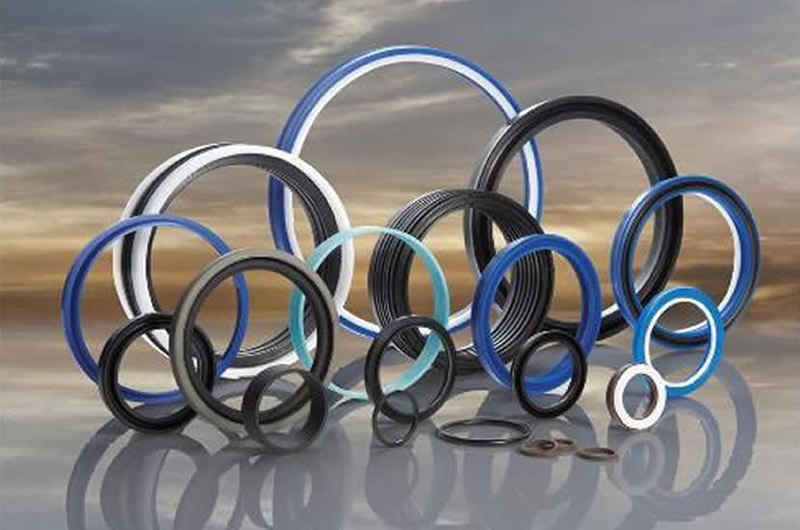
Gaskets and O'rings
ETHYLENE PROPYLENE RUBBER (EPR, EPDM)
EPDM is a copolymer of ethylene and propylene, and further a terpolymer of ethylene and propylene with a small amount of a third monomer (usually a diolefin) to permit vulcanization with sulfur. Generally Ethylene Propylene Rubber possesses excellent resistance to ozone, sunlight and weathering, and has very good flexibility at low temperature, good chemical resistance (many dilute acids and alkalis, polar solvents), and good electrical insulation property.

CURE SYSTEM – SULFUR-CURED VS. PEROXIDE-CURED
Standard EPDMs are usually sulfur-cured. Sulfur-cured compounds offer better flexible properties but are more prone to hardening and poorer compression set with high temperature. Peroxide-cured EPDMs have better heat resistance and lower compression set. It complies with long time usage especially for hose system of construction industry, but at the same time is more expensive and more difficult for production than the sulfur-cured.
OTHER COMMON VARIATIONS
- EPDMs are often internally lubricated to improve ease of installation or reduce friction for dynamic applications.
- EPDMs can be formulated with only “white list” ingredients as specified in 21.CFR 177.2600 for use in applications where the elastomer will be in contact with food or beverages.
- EPDMs can be submitted for approval by the National Sanitation Foundation (NSF) for use in drinking water applications.
- EPDMs are usually used in automotive air conditioning system where R134a refrigerant gas and POE or PAG lubricant and new refrigerant for environment protection R744 is used. In R744 air conditioning system, it requires excellent resistance to explosive decompression in hydrogen dioxide at high pressure and high temperature.
- EPDMs are usually used in phosphate ester type hydraulic fluids.
GENERAL INFORMATION
- ASTM D 1418 Designation: EPM, EPDM
- ISO/DIN 1629 Designation: EPM, EPDM
- ASTM D2000 / SAE J 200 Codes: AA, BA, CA, DA
- Standard Color(s): Black
- Hardness Range: 30 to 90 Shore A
- Relative Cost: Low
SERVICE TEMPERATURES
- Standard Low Temperature: -55°C / -67°F
- Standard High Temperature: 125°C / 257°F
- Special Compound Low Temperature: -55C / -67°F
- Special Compound High Temperature: 150°C / 302°F
APPLICATIONS
- Automotive
- Power Generation
- Petrochemicals
- Fluid Power
- Instrumentation
- Chemicals & Fertilizer Plants
- Electronics
- Filtration
- Pharmaceuticals
- Hydraulic Fittings
- Hydraulic Cylinders
- Pneumatic Cylinders
- Valves and Pumps
- Plumbing Products
- Dairy/Food Processing
- Earthmoving & Construction Equipment
